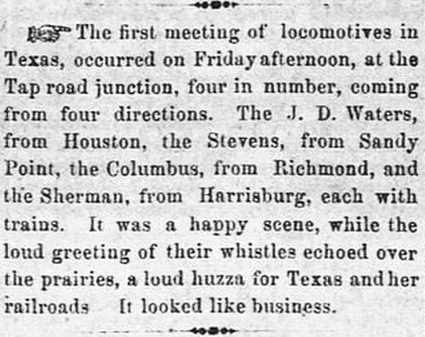The English Claim to Texas
In 1629, King Charles I of England granted to Sir Robert Heath, all the lands in North America between the 30th and 36th parallels from the Atlantic to the Pacific.
The province was to be called Carolana (yes, Carolana not Carolina.)
There was one stipulation. The grant covered only those lands, “not being then actually in the possession of any Christian Prince or State.”
Sir Robert never did anything with his grant. He was no colonizer and besides, he was too busy being Attorney General. It was just a piece of paper to him, so he sold it.
It changed hands several times until 1696 when it was acquired by Dr. Daniel Coxe, a former Royal Physician.
Here was a man ready to do something. He sent out a number of expeditions. His idea was to found a colony at the mouth of the Mississippi (called the Meschacebe on English maps of the period.)

From A Description of the English Provence of Carolana, published by the son of Dr. Coxe in 1722. Those French volunteers were Huguenots, protestants who were persecuted in France.
One of his boats made it a hundred miles up the Mississippi where it was met by a stunned Siuer de Bienville, the French governor of the region.
Bienville courteously informed the English captain that the river and its valley were already claimed by the King of France. Damn that stipulation in the grant!
And that looked like the end of things for Dr. Coxe and his dream of an American colony.
Fast forward nearly three centuries, to the mid 1980s.
The Houston Fire Department wanted to expand a maintenance building near Buffalo Bayou, just outside of downtown.
They uncovered a whole lot of graves dating back to the Civil War era. Not entirely unexpected. People knew that area had been the old City Cemetery. The graves were supposedly moved in the 1920s to make way for progress, but sometimes they just moved the stones.
Dr. Kenneth Brown, archaeologist at the University of Houston, was called in to investigate. What he found amazed him.
Among the 19th century graves he found nearly sixty “black earth burials”. That means the body was wrapped in a shroud and buried without a coffin with organic material piled atop to hasten decay. All were buried with the feet to the East.
Only one group of people ever buried their dead in this manner: the English. The City of London in 1563 mandated this form of burial for persons who died of disease. It was supposed to stop the spread of disease which was thought to be caused by fumes arising from the deceased.
Ceramic sherds and tobacco pipes found in these graves date from the 1600’s and are typical of those used in English colonies of that period. Not only that, there had one time been a ten foot moat surrounding the area, and evidence of structures built in the English manner was found.
There is certainly more research to be done, but the evidence looks pretty clear: there was a seventh flag that flew over Texas.
Old News
March 30, 1859 - The first meeting of locomotives in Texas.

